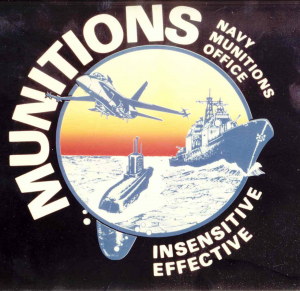An Insensitive Munition is one that will not react violently in an accident situation. Because of the close living quarters and the requirement for storing as many munitions as possible aboard ships, sailors literally live with their munitions. Magazines on warships are not far removed from the living areas. When serious accidents or fires happen, there are no places for people to hide and, in general, leaving the ship is not a good option. An unwanted munition reaction aboard a ship can, among other unpleasant things, ignite fires. Fires must be controlled immediately to avoid violent munition “cook-off” reactions that can kill people, spread fires and seriously impede the ship damage control efforts.
It is not surprising then that of the three military Services, the Navy is the most driven in the pursuit of Insensitive Munitions. In accidents or during enemy actions it is most important that munitions used aboard warships be able to withstand heat, shock, impacts by bullets or fragments, and nearby explosions without reacting in a violent manner. Aircraft carrier flight decks are particularly hazardous because of the large quantities of fuel and ammunition present during flight operations. Also, helicopters operating from other types of surface ships bring fuel and munitions into close proximity and create an environment conducive to munitions cook-off should an accident ignite fuel.
From October 1966 to November 1988, there were four flight deck accidents on U.S. aircraft carrier that involved fires and munition explosions. Two hundred and twenty sailors and naval aviators were killed, and seven hundred injured. Ninety-six planes, each costing more than 20 million dollars, were either destroyed or severely damaged. The ships were forced to leave the operational areas and undergo extensive repairs in shipyards. The material damage alone cost the Navy over 1.3 billion dollars
